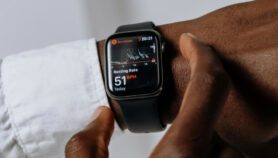By: Roger Bate
Send to a friend
The details you provide on this page will not be used to send unsolicited email, and will not be sold to a 3rd party. See privacy policy.
New technologies can help African countries identify counterfeit or substandard drugs, says director of Africa Fighting Malaria Roger Bate.
Poor quality medicines are pervasive across Africa. The WHO reports that more than 30 per cent of medicines on sale in many African countries are counterfeit, with some pills containing nothing more than chalk or water.
In last month’s African Journal of Pharmacy and Pharmacology, my research colleagues and I report that 41–47 per cent of antimalarial, antibiotic and antimycobacterial drugs sampled from pharmacies in five African countries and in India failed at least one quality test. [1]
Some drugs fail quality tests because they have been stored and transported inappropriately. Vaccines, antibiotics and antimalarials degrade when exposed to long periods of humidity, temperature variations and sunlight, and anecdotal reports suggest that many developing-world distributors and pharmacies lack adequate storage facilities.
Other substandard drugs come from sloppy manufacturing or outright faking.
Naming and shaming fakers
The Organisation for Economic Co-operation and Development reports that between 39 and 81 per cent of all counterfeit drugs seized by European Union officials from 2005–2007 originated in China or India. But a wholesale ban on products from these countries would be counterproductivebecause China and India also produce many good-quality, low-cost generic drugs.
African countries must be able to assess which producers and distributors are to blame and impose selective embargoes on them. Nigeria provides a good model. Nearly a decade ago, Nigerian health authorities indicated that more than 50 per cent of drugs in the country were fake or adulterated. But a rigorous anticounterfeiting campaign — introducing stiffer penalties and banning several dozen Chinese and Indian companies — has reduced this number to 10–16 per cent.
If more African countries can name and shame producers of poor quality and counterfeit drugs, India’s federal government, which is itself trying to combat fake drugs, will have more political ammunition to crack down on bad firms and their state-level sponsors.
To do so, African countries must differentiate between acceptable and counterfeit, or substandard, products — no easy task, given the growing sophistication of counterfeiters. But new technologies can help.
Detection devices
The German Pharma Health Fund’s ‘Minilab’ uses thin layer chromatography, disintegration and simple dye tests to help weed out the worst-quality products. Generally, a product will ‘pass’ the Minilab test if it contains 80 per cent or more of the labelled active ingredient. The system is effective and relatively cheap, costing just under US$10,000 for basic equipment, training and materials. But it does require potable water, reliable electricity and an air-conditioned room for testing. The US government and other donors have helped deploy more than 300 Minilabs in over 70 countries in the past decade. Tanzania has set up over 20 donated Minilabs across the country and health officials say they’re working well in routing out fake drugs.
Handheld spectrometers are more expensive — costing around US$50,000 for training and support — but may be more practical for developing countries. Originally developed for the US military to identify explosives and other dangerous products in the field, handheld spectrometers have been adapted to find counterfeit drugs. They create ‘spectral fingerprints’ that can be compared against standards for specific active ingredients or drugs. They weigh under two kilograms and are battery powered so require no laboratory. Substandard products can be spotted in less than 10 seconds. They are also easy to use — a developing country customs officer could be taught to use them in only a few hours. Nigeria is again leading the way and is field testing the devices.
These devices cannot replace more expensive and precise lab techniques, but they can help drug regulatory authorities screen out many bad products and provide enough evidence to launch more comprehensive investigations.
Prerequiste for progress
By itself, drug quality testing won’t stop the international fake drug trade. Political will is needed to enforce, or change, laws. In many places it is still not a criminal offence to fake life-saving drugs. And while some African countries often complain about fake imports, they also fail to scrutinise their own producers — such double standards must cease.
Yet quality assessment is a necessary first-step, since it is impossible to prosecute the guilty, or alert consumers, without really understanding the problem. If demand for spectrometers increases, their cost will fall. Maybe aid agencies should consider kick-starting this process by buying some for African nations. Not only would this help save lives, it would also allow aid groups to compare spectrometers’ cost effectiveness with the Minilabs. Information, after all, is often the best weapon.
Roger Bate is the Legatum Fellow at the American Enterprise Institute and a director of Africa Fighting Malaria.
References
[1] Bate, R., Tren, R., Hess, K. et al. Pilot study comparing technologies to test for substandard drugs in field settings. African Journal of Pharmacy and Pharmacology 3 165-170 (2009)













